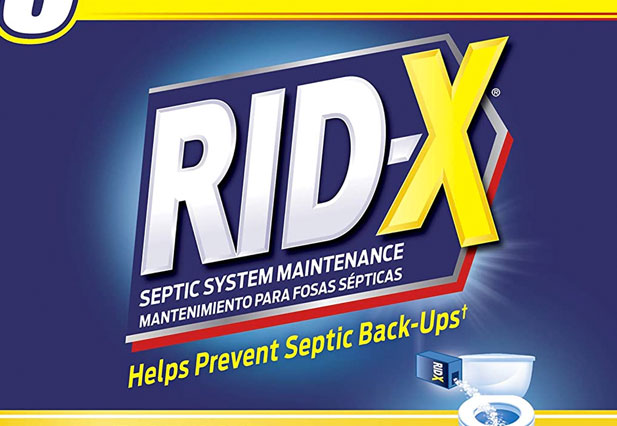Maintaining a clean and odor-free toilet is a top priority for any homeowner. That’s where Ridex comes into play. Wondering how often you should use Ridex in your toilet? This article will give you the lowdown on effectively utilizing this powerful cleaning agent to keep your toilet fresh and clog-free. Say goodbye to unpleasant smells and hello to a sparkling clean toilet, all by following a simple routine for Ridex usage.
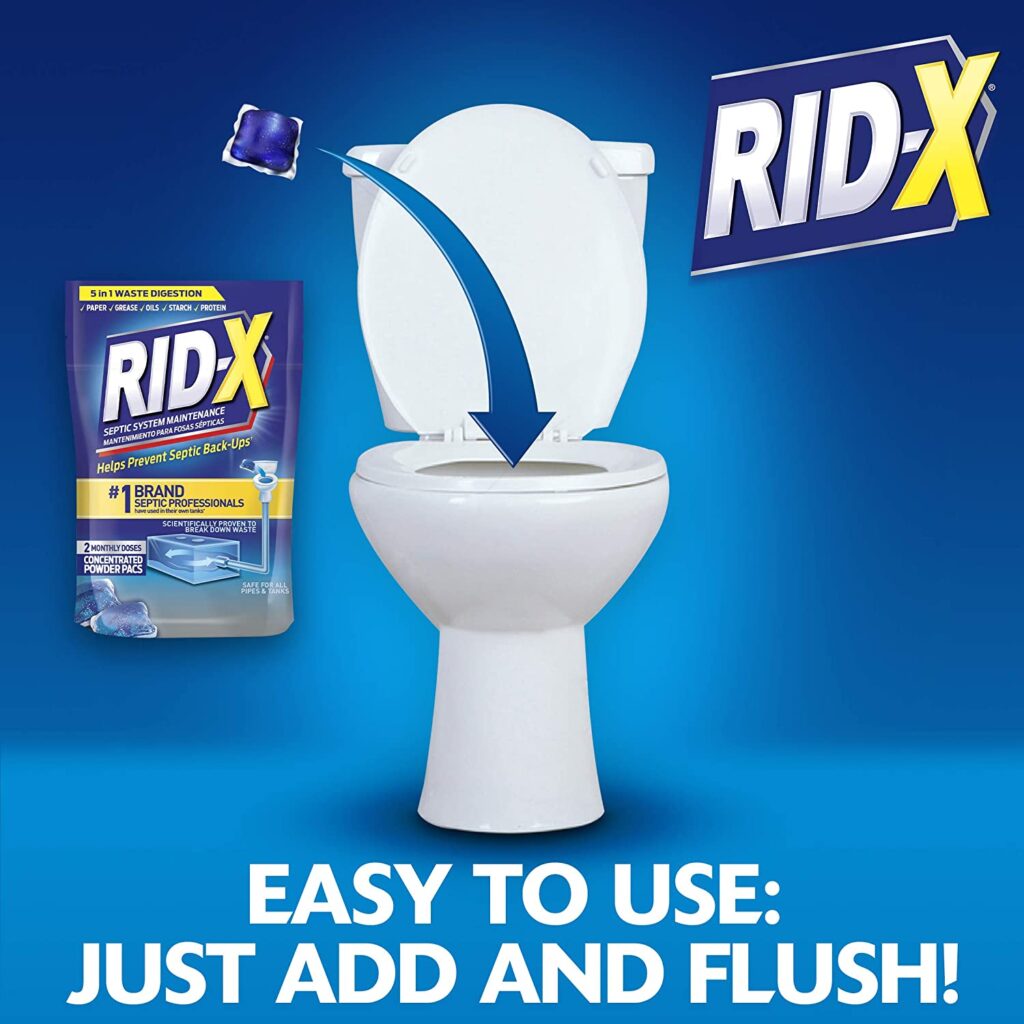
Understanding Ridex
What is Ridex?
Ridex is a septic system treatment that helps maintain the health and functionality of your toilet and septic system. It is a combination of enzymes and bacteria that work together to break down organic waste, such as toilet paper and human waste, into smaller particles. This allows for easier and more efficient digestion of waste by the septic system, reducing the risk of clogs and backups.
How does Ridex work?
Ridex works by introducing a blend of specialized enzymes and bacteria into your septic system. These microorganisms are naturally occurring and are specifically selected to promote the breakdown of organic waste. When you flush Ridex down your toilet, the enzymes and bacteria are dispersed into the septic tank, where they begin to break down solids and improve the overall digestion process. This helps to prevent the accumulation of sludge and extends the life of your septic system.
Why use Ridex in your toilet?
Using Ridex in your toilet can have numerous benefits for your septic system. By adding Ridex on a regular basis, you can enhance the natural decomposition process, ensuring that waste is broken down effectively and preventing clogs and backups. Ridex also helps to reduce odors, making your toilet more pleasant to use. Additionally, by maintaining the health of your septic system with Ridex, you can extend its lifespan and avoid costly repairs or replacements in the future.
Factors to Consider
Toilet Usage
The frequency of toilet usage in your household is an important factor to consider when determining how often you should put Ridex in your toilet. If your household has a higher number of occupants or a bathroom that is frequently used, it may be necessary to use Ridex more frequently to keep up with the demand. On the other hand, if your household has fewer members or a bathroom that is not heavily utilized, using Ridex less frequently may be sufficient.
Septic System Size
The size of your septic system is another crucial factor in determining Ridex usage. Larger septic systems have a higher capacity for waste storage and digestion, allowing for longer intervals between Ridex applications. Conversely, smaller septic systems may require more frequent Ridex treatments to maintain optimal performance. It is important to know the size of your septic system to ensure that you are using Ridex appropriately.
Number of Household Members
The number of household members plays a role in how often Ridex should be used in your toilet. More occupants in your household mean a higher volume of waste being flushed down the toilet, which can put additional strain on your septic system. If you have a larger household, it may be necessary to use Ridex more frequently to prevent overload and maintain the proper functioning of your septic system.
Frequency of Bathroom Usage
The frequency of bathroom usage is closely related to the number of household members. High-traffic bathrooms are subjected to a greater influx of waste, which can lead to faster buildup and potential system issues. If your bathroom experiences heavy usage, especially during certain times of the day or week, it may be beneficial to increase the frequency of Ridex usage to keep up with the demand and maintain a healthy septic system.
Type of Waste Flushed
The type of waste being flushed down your toilet can impact how often you should use Ridex. Ridex is designed to break down organic waste, such as human waste and toilet paper. However, flushing harsh chemicals, medications, or other non-biodegradable materials can disrupt the natural digestion process and potentially harm your septic system. It is important to be mindful of what you are flushing and avoid using chemical-based products that can interfere with Ridex’s effectiveness.
Existing Septic System Issues
If you are currently experiencing septic system issues, such as backups or foul odors, using Ridex can help address these problems. Ridex introduces enzymes and bacteria that work to break down waste and restore the balance of your septic system. However, it is essential to address any underlying issues with your septic system before relying solely on Ridex. Consulting a professional plumber can help you identify and resolve any lingering issues that may be affecting the efficiency of your septic system.
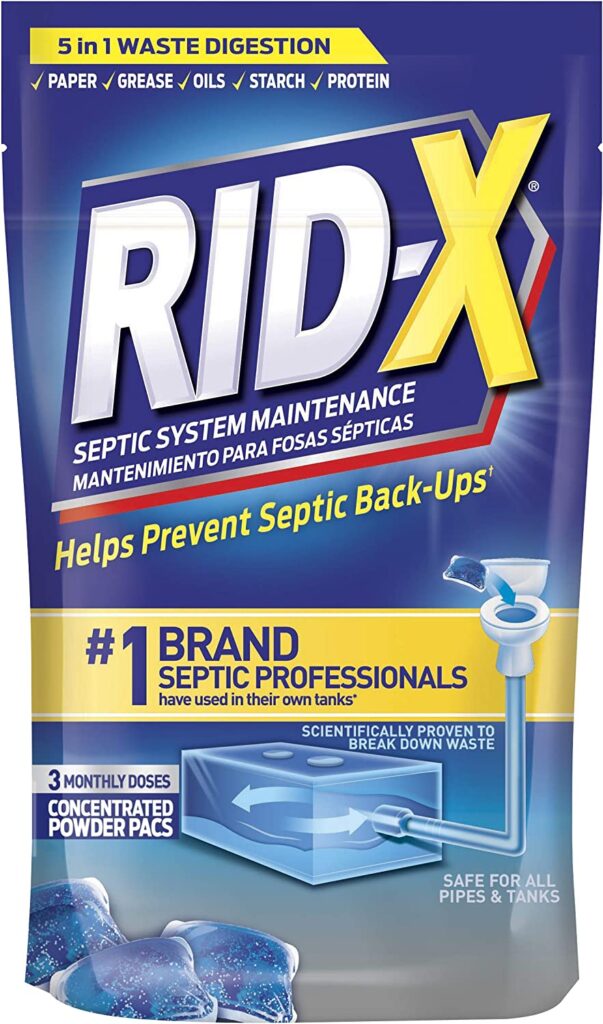
General Guidelines
Recommended Frequency
While there is no one-size-fits-all answer to how often you should put Ridex in your toilet, there are general guidelines that can help you determine the appropriate frequency. In most cases, it is recommended to use Ridex once a month to maintain the health and functionality of your septic system. This monthly treatment allows for a consistent introduction of enzymes and bacteria, ensuring the ongoing breakdown of waste in your septic tank.
Manufacturer’s Instructions
It is important to follow the manufacturer’s instructions when using Ridex. The product label will provide specific dosage recommendations based on the size of your septic system. By following these instructions, you can ensure that you are using Ridex in the appropriate amounts to achieve the desired results. Deviating from the recommended dosage may lead to ineffective treatment or potential harm to your septic system.
Consulting a Plumber
If you are unsure about how often to use Ridex or have specific concerns about your septic system, consulting a professional plumber can provide valuable insights and guidance. A plumber can assess the condition of your septic system and offer personalized recommendations based on its size, usage, and any existing issues. They can also provide expert advice on Ridex usage and other maintenance practices to keep your septic system in optimal condition.
Monitoring System Performance
Regularly monitoring the performance of your septic system is essential for identifying any potential issues or the need for adjustments in Ridex usage. Keep an eye out for warning signs such as slow drains, gurgling sounds, foul odors, or wet patches around your drain field. If you notice any of these signs, it may indicate a problem with your septic system that requires attention. By promptly addressing these issues and adjusting your Ridex usage if necessary, you can help preserve the health and longevity of your septic system.
Toilet Usage
Frequency of Flushes
The frequency of flushes in your household can impact the effectiveness of Ridex. If your household has a higher frequency of flushes, it may be beneficial to use Ridex more frequently to ensure that waste is consistently broken down and there is minimal risk of clogs or backups. Conversely, if your household has a lower frequency of flushes, using Ridex once a month may be sufficient to maintain the proper functioning of your septic system.
Type of Waste
The type of waste flushed down your toilet also plays a role in Ridex usage. Ridex is designed to break down organic waste, such as human waste and toilet paper. It is not effective in breaking down non-biodegradable materials or harsh chemicals. Avoid flushing items that can disrupt the natural digestion process, as they can interfere with Ridex’s effectiveness and potentially cause harm to your septic system.
Water Conservation Methods
Water conservation methods, such as using low-flow toilets or reducing water usage, can impact Ridex usage. The less water used during each flush, the more concentrated Ridex will be in your septic system. This can enhance its effectiveness and reduce the need for frequent Ridex treatments. If you have implemented water conservation measures in your household, it is important to consider adjusting your Ridex usage accordingly to maintain a healthy septic system.

Septic System Size
Determining System Size
Determining the size of your septic system is crucial for understanding how often you should put Ridex in your toilet. The size of your septic system is typically calculated based on the number of bedrooms in your home or the number of occupants. If you are unsure about the size of your septic system, consulting a professional plumber or referring to your septic system’s documentation can provide the necessary information.
Ideal Ridex Dosage
Once you know the size of your septic system, you can determine the ideal Ridex dosage. The product label will provide dosage recommendations based on the size of your septic system. Following these recommendations ensures that you are using Ridex in the appropriate amounts to achieve optimal results. Using too little Ridex may not provide sufficient treatment, while using too much can lead to overloading your septic system.
Implications of Overdosing
Overdosing your septic system with Ridex can have negative implications. While the enzymes and bacteria in Ridex are beneficial for breaking down waste, using excessive amounts can disrupt the balance of your septic system. This can result in an overgrowth of bacteria, leading to increased sludge accumulation and potential system issues. It is important to always follow the recommended dosage to maintain the proper functioning of your septic system.
Number of Household Members
Impact on Ridex Usage
The number of household members directly influences how often you should put Ridex in your toilet. A larger household with more occupants will generate a higher volume of waste, which can put additional strain on your septic system. In such cases, using Ridex more frequently, such as every two to three weeks, may be necessary to ensure effective waste digestion and prevent system overload.
Adjusting Dosage for Congested Systems
In households with a higher number of occupants and potential system congestion, adjusting the Ridex dosage can further support the health of your septic system. You may consider using a slightly higher dosage of Ridex to provide additional enzymes and bacteria to accommodate the increased waste load. However, it is essential to consult the manufacturer’s recommendations and avoid excessive dosage to prevent overloading your septic system.
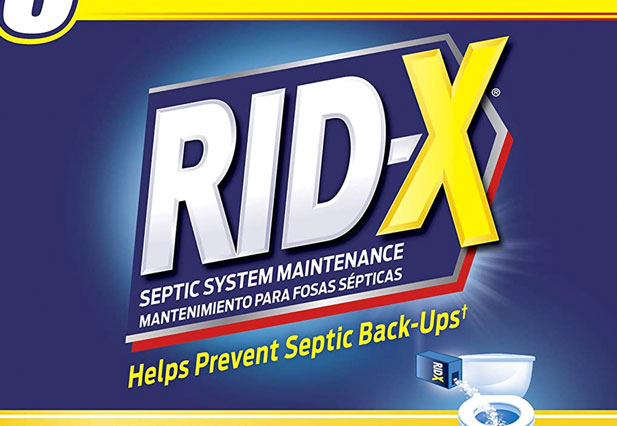
Frequency of Bathroom Usage
High vs. Low Traffic Bathrooms
The frequency of bathroom usage can vary depending on whether it is a high-traffic or low-traffic bathroom. High-traffic bathrooms, such as those shared by multiple family members or commonly used guest bathrooms, experience a higher volume of waste. Consequently, these bathrooms may require more frequent Ridex treatments to maintain the proper functioning of the septic system. Conversely, low-traffic bathrooms may only require Ridex treatments once a month to effectively break down waste.
Commercial/Public Restrooms
For commercial or public restrooms, the frequency of Ridex usage may need to be adjusted based on the number of users and the overall usage intensity. Bathrooms with heavy traffic, such as those in restaurants, shopping malls, or public venues, are subjected to a constant influx of waste. In these cases, using Ridex more frequently, such as every one to two weeks, can help prevent backups and maintain a healthy septic system.
Type of Waste Flushed
Normal Waste vs. Harsh Chemicals
Ridex is designed to break down normal waste, such as human waste and toilet paper. However, flushing harsh chemicals or non-biodegradable materials can hinder Ridex’s effectiveness and potentially damage your septic system. It is important to be mindful of what you flush down your toilet and avoid using chemical-based products that can disrupt the natural digestion process. By minimizing the introduction of harmful materials, Ridex can work more efficiently in breaking down organic waste.
Implications of Chemical-Based Products
Using chemical-based products in your toilet can have adverse effects on your septic system and Ridex effectiveness. Harsh cleaning agents, antibacterial products, and certain medications can disrupt the natural balance of beneficial bacteria in your septic system, potentially inhibiting the digestion of waste. This disruption can render Ridex less effective in breaking down organic waste and increase the risk of system issues. Opting for septic-safe, biodegradable products can help maintain the effectiveness of Ridex and ensure a healthy septic system.
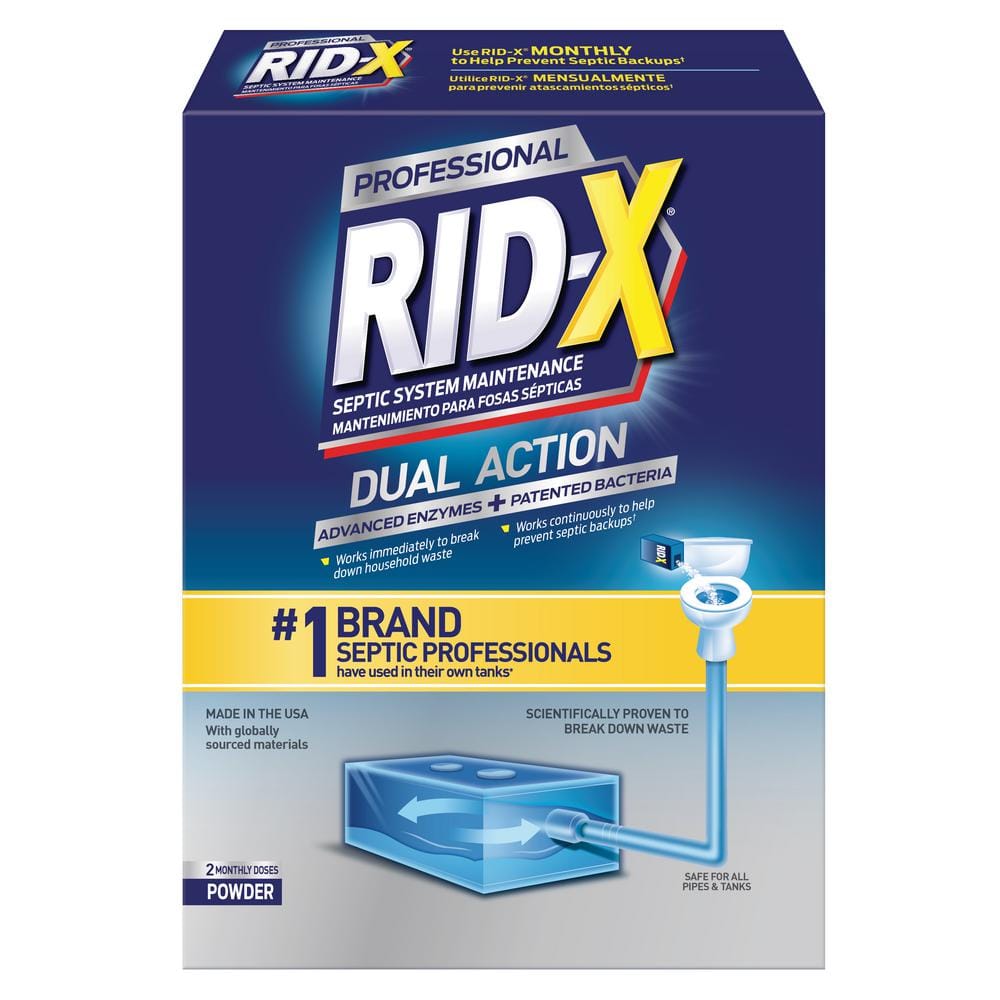
Existing Septic System Issues
Recognizing System Problems
If you are experiencing septic system issues, it is important to recognize and address them before relying solely on Ridex. Signs of septic system issues include slow drains, foul odors, gurgling sounds, sewage backups, or wet areas around the drain field. These issues may indicate underlying problems with your septic system, such as clogs, leaks, or a full septic tank. It is crucial to consult a professional plumber to assess and resolve any existing issues to restore the optimal functioning of your septic system.
Using Ridex to Address Issues
Once any existing septic system issues have been addressed, Ridex can be used to help prevent future problems. Ridex introduces enzymes and bacteria into your septic system that work to break down waste and maintain a healthy balance of bacteria. Regular Ridex treatments following the recommended dosage can support the ongoing digestion of waste and minimize the risk of clogs, backups, and foul odors. However, it is important to address any underlying issues first to ensure that Ridex can work effectively in preventing future problems.
Monitoring System Performance
Signs of Septic System Issues
Regularly monitoring the performance of your septic system is crucial for identifying any potential issues. Signs of septic system issues include slow drains, foul odors, gurgling sounds, sewage backups, or wet areas around the drain field. These signs can indicate problems such as clogs, leaks, or a full septic tank. By promptly addressing these issues, you can prevent further damage to your septic system and maintain its optimal performance.
Adjusting Ridex Usage Accordingly
If you notice any signs of septic system issues or changes in system performance, adjusting your Ridex usage may be necessary. Increasing the frequency of Ridex treatments can provide additional enzymes and bacteria to help restore the balance of your septic system. However, it is important to consult a professional plumber to assess the specific issue and provide guidance on adjusting Ridex usage or implementing other necessary solutions. Regular monitoring and appropriate adjustments to Ridex usage can help ensure the ongoing health and functionality of your septic system.
In conclusion, understanding the factors that influence Ridex usage and following general guidelines can help you determine how often you should put Ridex in your toilet. Factors such as toilet usage, septic system size, the number of household members, frequency of bathroom usage, type of waste flushed, existing septic system issues, and monitoring system performance all play a role in determining the appropriate Ridex usage. By considering these factors and following manufacturer’s instructions, consulting a plumber when needed, and monitoring system performance, you can effectively maintain the health and functionality of your septic system with Ridex.
